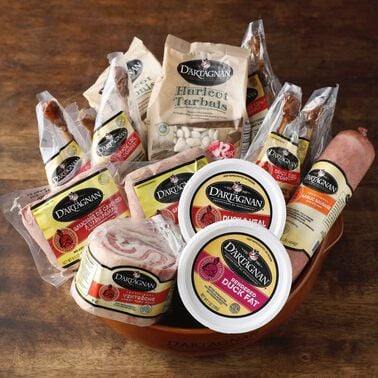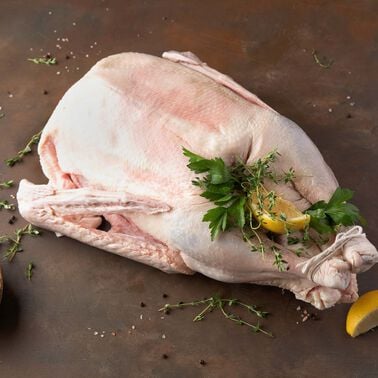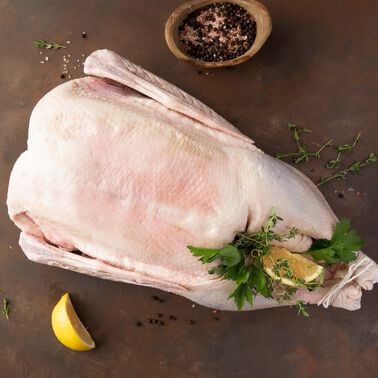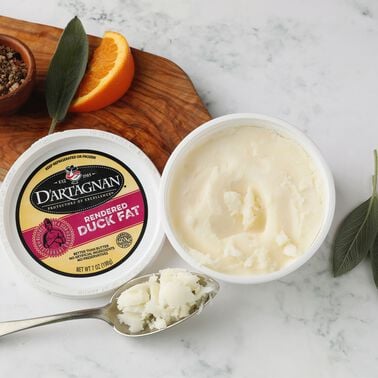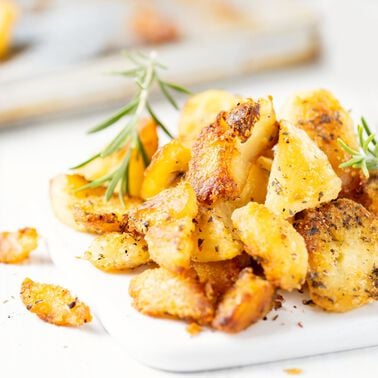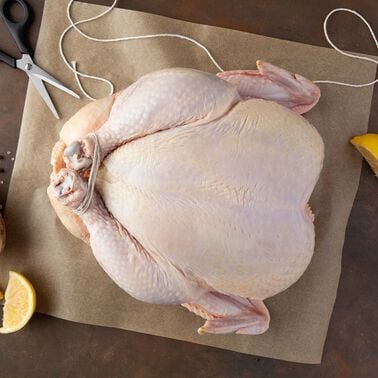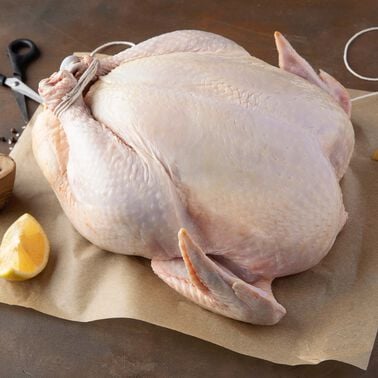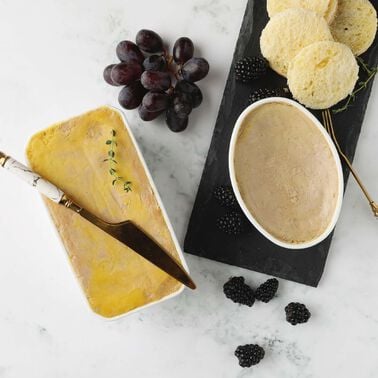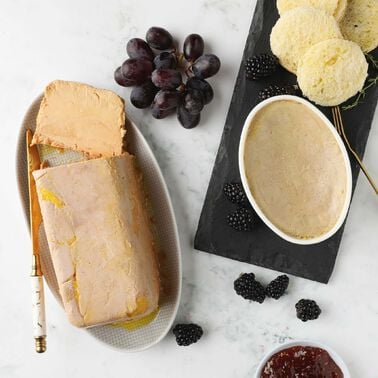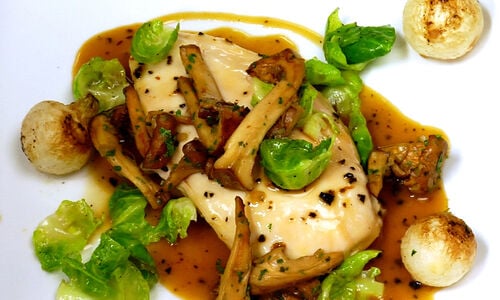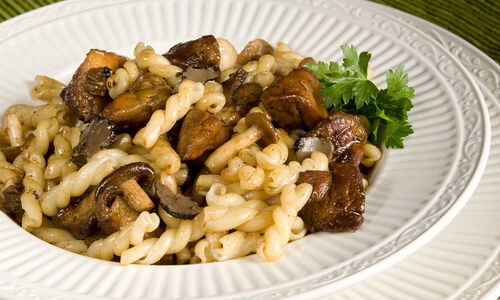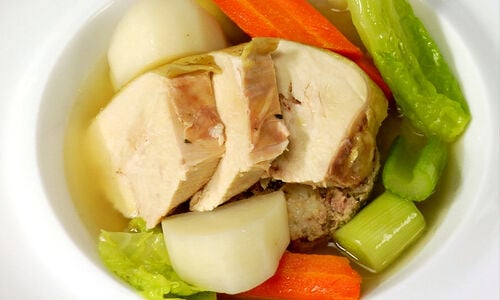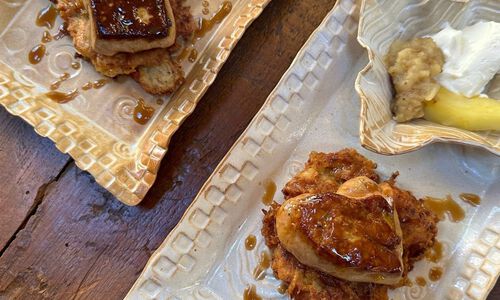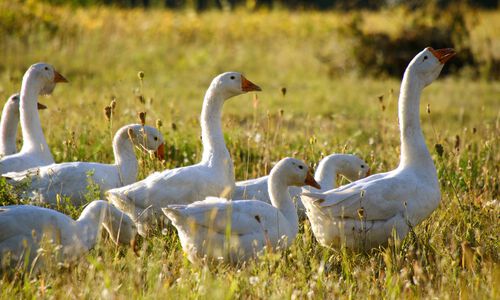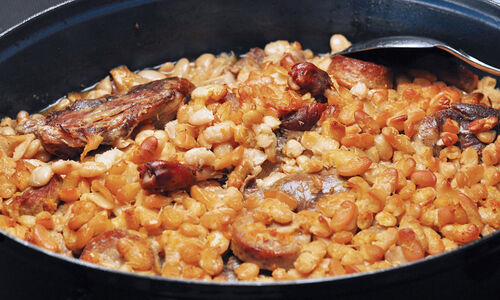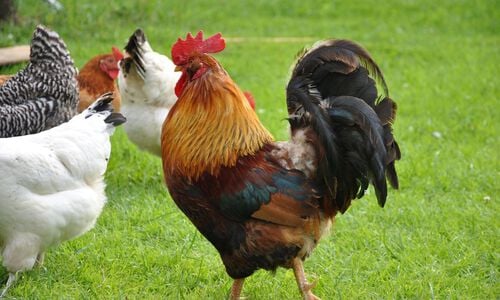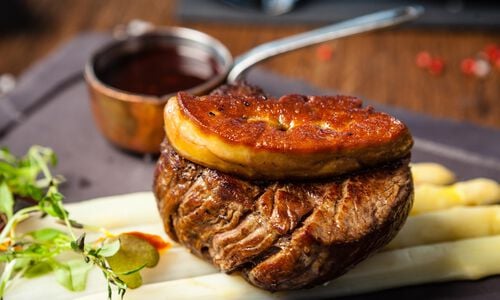
Let My People Eat Foie Gras
The Jewish people are credited with bringing the feeding technique that fattens the liver of ducks or geese out of the land of Egypt and into Europe. The rest, as they say, is history.
So it seems particularly appropriate to celebrate Hanukkah with a little foie gras. The terrine is a divine preparation of foie gras, which becomes an instant classic when sliced and served cold with cranberry port reduction as an appetizer. For a hot preparation that is impressive yet simple, sear slices of fresh foie gras in a hot pan, and complement with dried fruit flapjacks for a unique twist on the classic latke. Or make our stellar potato pancakes to hold the seared foie gras slices.
Leave the kasha varnishkes for Grandma, and instead try our easy-to-make pasta with foie gras and wild mushrooms. If you are feeling particularly guilty about playing fast and loose with this one, use farfelle (bowtie pasta) instead of gemelli pasta. You’ll get over it when you sink your teeth into a cube of sautéed foie gras, and then wipe the bowl clean of the luxurious sauce, redolent of foie gras and mushrooms.
Other Birds of Good Repute
In the old country, a Jewish family was always fattening up some birds for schmaltz (chicken fat, though we use duck fat with great results) and the roasting pan. It was considered appropriate to slaughter a duck or goose for Hanukkah, roast it and use some of the rendered fat to fry the potato latkes. Banish the thought of the Dickensian Christmas goose, and serve a traditional roasted goose as a superb shtetl-inspired centerpiece for your Hanukkah meal. And if goose is too rich for your blood, we like capon almost any day of the year. Try it poached in broth with a foie gras stuffing, for the ultimate poule au pot. A whole roasted duck with sage, apple and prune stuffing would also make an exciting and savory entrée course.
The Slow Cooker Gets the Meat
Cholent. It’s a Yiddish word for a slow-simmered stew that is eaten for lunch on the Sabbath. Originally cooked overnight in the brick oven of the town bakery, cholent is often made in a slow-cooker today. Recipes vary, but it’s basically a stew of meat, potatoes, beans and barley. It can be made with beef or chicken, but we like to make it with duck and call it cassoulet. No one is certain how much cholent and cassoulet have in common historically, but to our eye, they are very similar. A clay bowl, a low oven, a long time and a mess of meat and beans sounds to us like the perfect meal for a cold winter’s eve.
Like Manna from Heaven
If you are balking at the idea of roasting a goose or duck, perhaps a smaller bird would work on your holiday table. In the Old Testament, the quail played an important role in the Exodus story. These tasty little birds were the choice protein of God himself to feed his people as they wandered the desert. We like ours roasted Gascon style, with foie gras and Armagnac. You could serve eight quails, one for each night of Hanukkah.
Whether sticking to the tried and true traditional dishes of Hanukkah, or forging new traditions, make sure to celebrate with plenty of friends and family. And to raise a glass with that perennial Hebrew toast: L’Chaim! To life!

